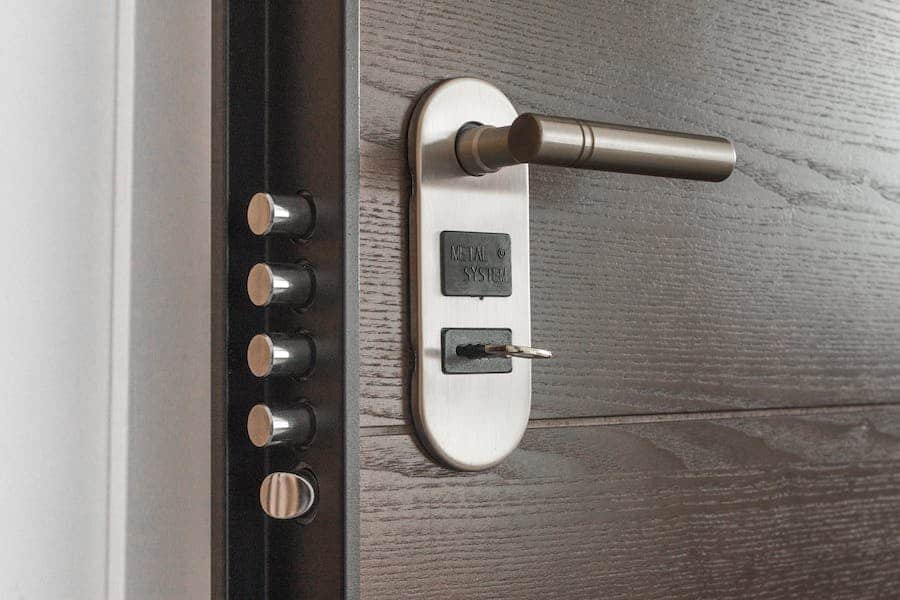In an ever-changing world, security is paramount. Knowing how to rekey a Schlage lock is a valuable skill that ensures your safety and peace of mind. Whether you’ve moved into a new home, faced a security breach, or simply want to maintain control over your property, rekeying offers a cost-effective solution. In this comprehensive guide, we will walk you through the process step by step, equipping you with the knowledge to safeguard your space and loved ones. Discover why and when rekeying is necessary, gain insights into Schlage lock systems, and learn the essential tools and techniques for this vital task.
How To Rekey Schlage Lock?
Rekeying a Schlage lock is a precise process, but with the right tools and careful steps, you can do it yourself. Here’s a simplified step-by-step guide:
Tools And Materials You’ll Need:
- Schlage rekeying kit
- Screwdriver
- New keys
Steps:
- Remove The Lock From The Door: Unscrew and remove the deadbolt or knob lock from your door. This will make the rekeying process easier to handle.
- Disassemble The Lock: Use a screwdriver to take apart the lock. You’ll need to access the cylinder, which is the part of the lock that holds the pins and tumblers.
- Remove The Cylinder: Slide the cylinder out of the lock housing. It’s usually held in place with a retaining clip or screws. Be gentle to avoid damaging the pins and springs inside.
- Dump Out Old Pins And Springs: Carefully dump out the old pins and springs from the cylinder.
- Insert New Pins: Use the Schlage rekeying kit to match the new key’s cuts with the appropriate pins. Insert the new pins into the cylinder, ensuring they’re flush with the cylinder’s surface.
- Reassemble The Lock: Put the cylinder back into the lock housing, making sure it aligns correctly. Reattach the retaining clip or screws to secure it in place.
- Test The Lock: Insert the new key and test the lock to make sure it works smoothly. Try locking and unlocking the door several times to ensure it functions correctly.
- Reinstall The Lock: Once you’re satisfied with the rekeyed lock’s performance, reinstall it on your door.
- Test Again: Test the lock one final time with the new key to ensure everything is functioning as expected.
Why Rekeying A Schlage Lock Is Necessary?
Rekeying a Schlage lock may be necessary for several reasons:
- Security Concerns: One of the primary reasons to rekey a Schlage lock is to enhance security. If you’ve moved into a new home or office, you can’t be certain who has copies of the existing keys. Rekeying the lock ensures that only those with the new keys can access the premises, providing peace of mind.
- Lost Or Stolen Keys: If you’ve lost your keys or had them stolen, there’s a risk that unauthorized individuals might use them to enter your property. Rekeying the lock promptly invalidates the old keys, preventing any potential security breaches.
- Change Of Ownership: In situations where you’ve purchased a property from a previous owner or taken over a commercial space, rekeying is essential. It eliminates the possibility of the previous owner or tenants having access to your property.
- Employee Turnover: In a business setting, when employees leave or are terminated, it’s crucial to rekey locks on doors they had access to. This ensures that former employees can’t enter the premises without authorization, protecting sensitive information and assets.
- Master Key System Changes: If you have a master key system in place and need to change access levels or reconfigure keying hierarchies, rekeying is necessary to align the locks with the new requirements.
- Enhanced Control: Rekeying allows you to maintain better control over who has access to your property. You can keep track of who has copies of the keys and ensure that access is limited to authorized individuals.
- Cost-Effective: Rekeying is often more cost-effective than completely replacing locks. It saves you money while achieving the same security benefits as a brand new lock installation.
When To Rekey A Schlage Lock?
Knowing when to rekey a Schlage lock is crucial for maintaining security and control over your property. Here are specific scenarios and circumstances when rekeying is necessary:
Moving Into A New Home: Whenever you move into a new residence, it’s highly recommended to rekey the Schlage locks. You can’t be certain who may have copies of the existing keys, such as previous owners, real estate agents, or contractors. Rekeying ensures that only you and those you authorize have access to your new home.
After A Break-In Or Security Breach: If your home or business experiences a break-in or a security breach, it’s essential to rekey the locks immediately. Intruders might have gained access or could have stolen keys during the incident. Rekeying prevents them from using those keys again.
Change Of Ownership: When you purchase a property from a previous owner or take over a commercial space from a previous tenant, rekeying is necessary. This action ensures that the former occupants no longer have access, maintaining security and control.
Employee Turnover: In a business or office setting, rekeying Schlage locks is essential when employees leave, whether through resignation or termination. This measure prevents former employees from accessing the premises, protecting sensitive data and assets.
Master Key System Changes: If you have a master key system in place and need to reconfigure access levels, add or remove master keys, or make any changes to the keying hierarchy, rekeying is necessary to align the locks with the new system.
Lost Or Stolen Keys: If you lose your keys or have them stolen, it’s a security risk. Rekeying the lock promptly invalidates the old keys, ensuring that unauthorized individuals cannot use them to gain entry.
Upgrade To High-Security Locks: When upgrading your security system, such as transitioning to high-security Schlage locks, it’s advisable to rekey all locks to match the new system’s keys. This ensures consistent and enhanced security.
Additional Tips And Best Practice
- Safety First: Before you start, ensure the area is well-lit and safe. Have necessary safety gear, such as gloves and safety glasses, especially if you’re new to rekeying locks.
- Gather All Tools And Materials: Make sure you have all the required tools and materials ready before you begin the rekeying process. This includes the Schlage rekeying kit, screwdriver, and new keys.
- Follow Manufacturer Instructions: Always follow the manufacturer’s instructions provided with the Schlage rekeying kit. Different Schlage locks may have slightly different rekeying procedures.
- Organize Components: As you disassemble the lock, organize and label the components. This makes it easier to reassemble the lock correctly.
- Maintain Cleanliness: Ensure that the work area is clean, and your hands and tools are free of dirt and debris. Any contaminants can affect the lock’s performance.
- Check For Compatibility: Verify that the new pins and key are compatible with the specific Schlage lock you are rekeying. Using incorrect pins or keys can lead to lock malfunction.
- Practice Patience: Rekeying can be a delicate process. Take your time and be patient, especially if you’re new to it. Rushing can lead to mistakes.
- Keep Records: Maintain records of the rekeying process, including the key code and any notes about the lock. This documentation can be valuable for future reference.
- Consider Professional Help: If you’re uncertain about rekeying or encounter difficulties, it’s wise to seek assistance from a professional locksmith. They have the experience and expertise to ensure the job is done correctly.
- Regular Maintenance: Implement a regular maintenance schedule for your locks. Rekey them periodically to maintain security, even if there haven’t been specific events like moving or security breaches.
Summary
Rekeying Schlage locks is a vital security measure necessary when moving into a new home, after a break-in, during ownership changes, or following employee turnover. It safeguards against unauthorized access, enhancing control and peace of mind. To ensure a successful rekeying process, gather tools, follow manufacturer instructions, and maintain cleanliness. Double-check your work, keep records, and consider professional help if needed. Regular maintenance and upgrading to high-security locks are recommended practices, ensuring long-term security and protection against potential threats.
FAQ’s
How Much Does It Cost To Rekey A Schlage Lock?
The cost of rekeying a Schlage lock typically ranges from $50 to $150, depending on factors like your location and the complexity of the job.
Can I Rekey A Schlage Lock Myself?
Yes, you can rekey a Schlage lock yourself if you have the necessary tools and experience. However, it’s advisable to hire a professional locksmith for more complex or high-security locks.
How Long Does It Take To Rekey A Schlage Lock?
Rekeying a Schlage lock can take anywhere from 15 minutes to an hour, depending on your familiarity with the process and the lock’s complexity.
Do I Need To Replace My Schlage Lock When I Rekey It?
No, rekeying a Schlage lock involves changing the internal pins and springs to match a new key. You don’t need to replace the entire lock.
Can I Rekey My Schlage Lock To Work With Multiple Keys?
Yes, Schlage locks can be rekeyed to work with multiple keys, allowing for convenience and shared access among authorized individuals.








